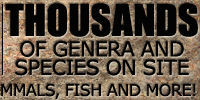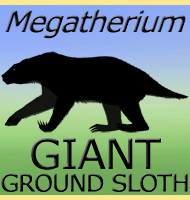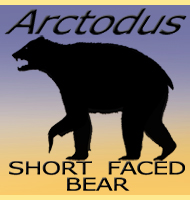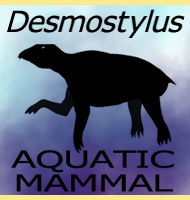


Piscobalaena
Name:
Piscobalaena.
Phonetic: Pis-ko-bah-leen-ah.
Named By: G. Pilleri & H. J. Siber
- 1989.
Classification: Chordata, Mammalia, Cetacea,
Cetotheriidae.
Species: P. nana (type).
Diet: Carnivore/filter feeder.
Size: Skull about 1 meter long. Total body
size roughly estimated at up to about 5 meters long.
Known locations: Peru - Pisco Formation. USA,
Florida - Bone Valley Formation.
Time period: Serravallian to Messinian of the
Miocene.
Fossil representation: Skulls and partial remains of
a few individuals.
Piscobalaena is a genus of filter feeding whale known to have inhibited the waters between South and North America during the Miocene. This seaway was a popular transit route for whales swimming from the Atlantic Ocean into the Pacific and back again. It was also fraught with danger however as giant sharks, including the infamous C. megalodon are also known to have been present in these waters, and a five meter long whale like Piscobalaena would have been the perfect target for such a predator.
Further reading
- Neuer Spattertiarer cetotherid (Cetacea, Mysticeti) aus der
Pisco Formation Perus. - Beitrage zur Palaontologie der Cetaceen
Perus 109-115. - G. Pilleri & H. J. Siber -
1989.
- The anatomy and relationships of Piscobalaena nana (Cetacea,
Mysticeti), a Cetotheriidae s.s. from the early Pliocene of Peru. - V.
Bouetel & C. Muizon - 2006.
----------------------------------------------------------------------------
Random favourites
 |
 |
 |




